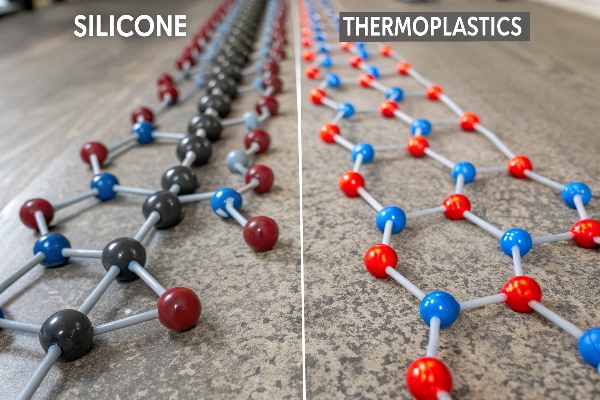Everyone has seen those massive video screens at sports stadiums and concerts. They grab your attention with stunning visuals but leave you wondering how they work. These technological marvels can transform any event but come with significant costs and technical challenges.
A Jumbotron screen is a large-scale electronic display typically used in sports venues, concerts, and public spaces. It consists of multiple LED panels combined to create one massive display capable of showing high-definition video, live feeds, advertisements, and information to large audiences.
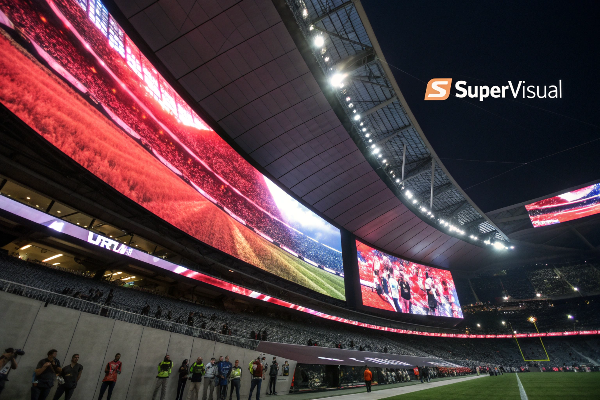
Jumbotron screens have revolutionized the way we experience live events. If you've ever attended a major sporting event or concert, you've likely felt the impact of these enormous displays. Let's explore what makes these screens special and how they're transforming the entertainment landscape.
Understanding the Jumbotron Concept
At stadiums and arenas, these giant screens dominate the visual landscape. You may wonder about their technology, costs, and why they've become essential for event organizers wanting to create memorable experiences.
A Jumbotron is a large-screen display technology consisting of multiple LED modules arranged together to form one seamless display. Originally created by Sony in the 1980s, today's Jumbotrons use advanced LED technology to deliver bright, high-resolution visuals visible even in direct sunlight.
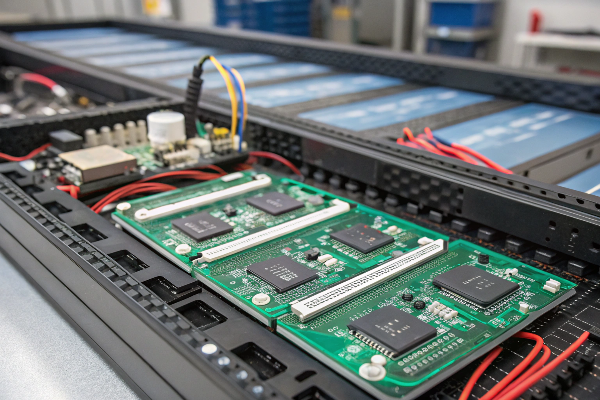
Jumbotron screens have undergone significant technological evolution since their inception. The first generation of these massive displays relied on cathode ray tube (CRT) technology, which limited their brightness and resolution. Modern Jumbotrons utilize cutting-edge LED (Light Emitting Diode) technology that offers superior performance in outdoor environments.
What makes these displays particularly impressive is their modular nature. Each Jumbotron consists of numerous LED panels or modules connected together to create a single, cohesive display. This modular design enables incredible flexibility in size and shape. For instance, at SuperVisual, we've created custom Jumbotron installations ranging from standard rectangular shapes to curved, spherical, and completely custom configurations to meet specific venue requirements.
The term "Jumbotron" was originally a brand name owned by Sony, but much like "Kleenex" or "Band-Aid," it has become the generic term used to describe any large-format video screen in a public venue. Today, various manufacturers produce these giant screens, each with their own technological advantages and specializations.
I remember visiting a client's stadium installation where we replaced an older CRT-based system with modern LED technology. The difference was striking - not just in image quality, but in power consumption and maintenance requirements. The facility manager couldn't believe the transformation, especially in how the new display remained visible even during bright afternoon games.
How Does a Jumbotron Screen Work?
You might be confused by how these massive screens maintain such crisp images. The technology behind Jumbotrons seems complex and mysterious. Understanding the basics can help you make better decisions when considering a large format display.
Jumbotron screens work by combining thousands of individual LED modules, each containing multiple RGB (red, green, blue) LEDs that act as pixels. These modules connect to form a single display, controlled by specialized software and processing systems that distribute video signals across the entire screen surface.
The inner workings of a Jumbotron screen involve several key components that function together to create the spectacular visual experiences we associate with these massive displays. At the heart of the system are the LED modules themselves. Each module typically contains multiple RGB LEDs arranged in a grid pattern. By varying the intensity of these three primary colors, the system can produce millions of color combinations for each pixel in the display.
Behind the LED modules is a complex network of power supplies, data controllers, and signal processors. These components ensure that video signals are properly distributed across the entire display surface. Modern Jumbotrons employ sophisticated processing systems that can scale, crop, and adjust incoming video feeds to match the screen's specific resolution and aspect ratio.
The brain of the Jumbotron system is its control unit, which typically consists of specialized hardware and software components. This control system manages content playback, schedules, transitions between different video sources, and even creates special effects. Many systems we install at SuperVisual include redundancy features to prevent display outages during critical moments of an event.
One particularly interesting aspect of Jumbotron technology is its ability to handle varying environmental conditions. Outdoor installations must withstand everything from intense heat and cold to rain, snow, and high winds. This requires specialized waterproofing, thermal management systems, and robust mechanical designs. For example, in a recent installation for a client in a coastal region, we incorporated special corrosion-resistant components and enhanced waterproofing to protect against salt air exposure.
Additionally, modern Jumbotrons feature advanced calibration systems that ensure color consistency across the entire display surface. This is crucial for large screens where even slight variations in brightness or color temperature would be immediately noticeable to viewers.
What Are the Key Features of Jumbotron Screens?
Many venue owners struggle to understand what features matter most in a Jumbotron screen. The market offers numerous options with varying specifications and price points. Without proper knowledge, you risk investing in technology that won't meet your specific needs.
Key features of Jumbotron screens include pixel pitch (determining resolution and optimal viewing distance), brightness level (measured in nits), refresh rate (affecting motion clarity), viewing angle, color depth, IP rating for weather resistance, and energy efficiency. These specifications determine the screen's performance in specific environments.
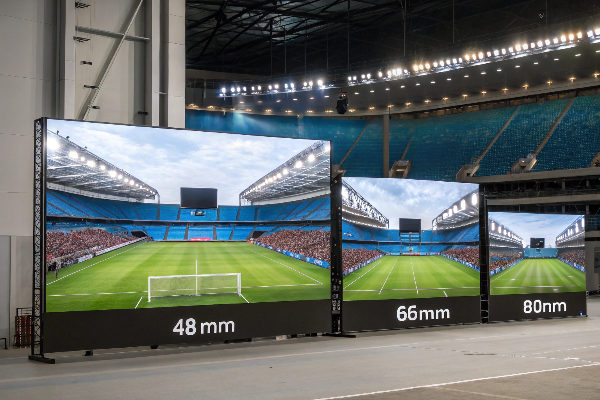
When evaluating Jumbotron screens, several critical features determine their performance and suitability for specific applications. Pixel pitch, measured in millimeters, refers to the distance between individual pixels and directly impacts the resolution and optimal viewing distance. Smaller pixel pitches (like 4mm or 6mm) provide higher resolution but are typically more expensive. For large stadiums where viewers are farther away, larger pixel pitches (10mm-20mm) may be perfectly adequate while reducing costs significantly.
Brightness capability is another crucial consideration, especially for outdoor installations. Measured in nits (candelas per square meter), brightness determines visibility in varying light conditions. Indoor applications may only require 1,000-2,000 nits, while outdoor displays often need 5,000-7,000 nits to remain visible in direct sunlight. I recall a client who initially opted for a lower brightness display for their outdoor plaza, only to later upgrade after finding the screen difficult to see during daylight hours.
The refresh rate of a Jumbotron affects how smoothly motion appears on screen, with higher rates (≥3840Hz) eliminating flicker and improving the viewing experience, especially for fast-moving sports content. Similarly, the viewing angle determines how far off-center viewers can still see a clear image. Premium Jumbotron screens offer viewing angles of 140° or more, ensuring that spectators throughout the venue enjoy a quality viewing experience.
Weather resistance is critical for outdoor installations, indicated by the IP (Ingress Protection) rating. A rating such as IP65 or IP66 signifies protection against dust and water infiltration. Energy efficiency has also become increasingly important, with modern LED technology offering significant improvements over older systems. Advanced Jumbotrons now incorporate automatic brightness adjustment, power-saving modes, and efficient heat management systems.
For venues with unique architectural considerations, the structural design of the Jumbotron becomes important. Some installations require curved, spherical, or completely custom-shaped displays. At SuperVisual, we've developed specialized mounting systems and flexible LED modules that can conform to various surfaces while maintaining image integrity.
| Feature | Why It Matters | Example Specification |
|---|---|---|
| Pixel Pitch | Determines resolution and viewing distance | 10mm for stadiums, 4mm for indoor venues |
| Brightness | Affects visibility in varying light conditions | 5,000+ nits for outdoor, 1,500+ for indoor |
| Refresh Rate | Impacts motion clarity and video smoothness | 3840Hz+ for sports content |
| IP Rating | Indicates weather resistance | IP65/66 for outdoor installations |
| Viewing Angle | Ensures visibility from different positions | 140°+ horizontal and vertical |
What Are the Advantages of a Jumbotron Screen?
Event organizers often debate whether installing a Jumbotron is worth the investment. The upfront costs can be significant, and the technical requirements seem overwhelming. You might question if the benefits truly justify the expense and complexity.
Jumbotron screens provide numerous advantages including enhanced viewer experience through close-up views and replays, increased advertising revenue potential, versatility for multiple content types, improved crowd engagement, and the ability to display real-time information and emergency messages. They effectively transform ordinary venues into immersive environments.
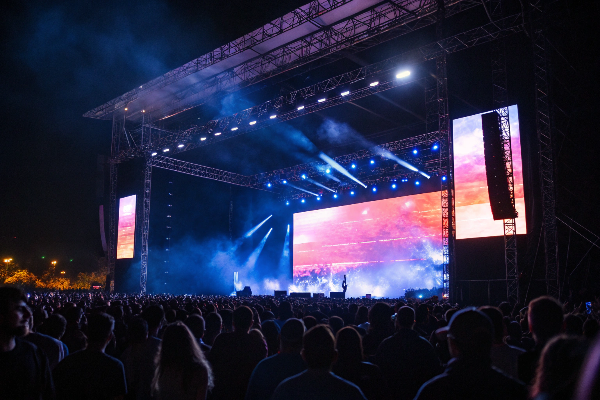
The advantages of implementing Jumbotron screens extend far beyond simply providing a larger viewing surface. From an event management perspective, these displays fundamentally transform how audiences experience live events. In sports venues, Jumbotrons offer spectators close-up views of the action, instant replays, and slow-motion analysis that enhance understanding and appreciation of the game. This capability bridges the gap between the in-person experience and television viewing, giving attendees the best of both worlds.
From a business standpoint, Jumbotrons create valuable advertising real estate that can generate substantial revenue streams. Modern control systems allow for dynamic content scheduling, enabling venues to display targeted advertisements based on time of day, type of event, or even specific moments during an event. I've worked with several venue operators who have completely offset their Jumbotron investment through strategic advertising partnerships and sponsorships.
The versatility of Jumbotron technology enhances venue flexibility. The same screen can display scoreboard information during a sporting event, presentation slides during a corporate function, and vibrant visuals during a concert. This adaptability maximizes the utility and return on investment for venue owners. In one multi-purpose arena we equipped, the management reported a 30% increase in booking requests specifically citing the new display capabilities as a deciding factor.
Jumbotrons also serve critical communication functions. During emergencies, these displays can quickly broadcast evacuation instructions or safety information to large crowds. For everyday operations, they can provide wayfinding assistance, concession information, or transportation updates. This multifunctionality adds significant value beyond entertainment purposes.
The psychological impact of Jumbotrons shouldn't be underestimated either. These massive displays create a sense of occasion and elevate the perceived value of events. Attendees often report higher satisfaction levels at venues with high-quality visual displays, even if other aspects of the experience remain unchanged. This perception boost can justify premium ticket pricing and increase patron loyalty over time.
Energy efficiency improvements in modern LED technology have also addressed previous concerns about operating costs. Newer systems consume significantly less power than older technologies while delivering superior performance. For example, one stadium client reported a 40% reduction in display-related energy costs after upgrading to our latest LED Jumbotron system, despite increasing their screen size by nearly 25%.
What Are the Types of Jumbotron Screens?
The variety of Jumbotron technologies on the market creates confusion for potential buyers. Different venues have unique requirements, and choosing the wrong type can result in poor performance and wasted investment. The technical specifications can overwhelm even experienced facility managers.
Jumbotron screens come in several types including standard rectangular LED displays, curved LED displays, spherical LED displays, modular/custom-shaped displays, and transparent LED screens. Each type serves specific venue requirements based on architectural constraints, viewing angles, and intended applications.
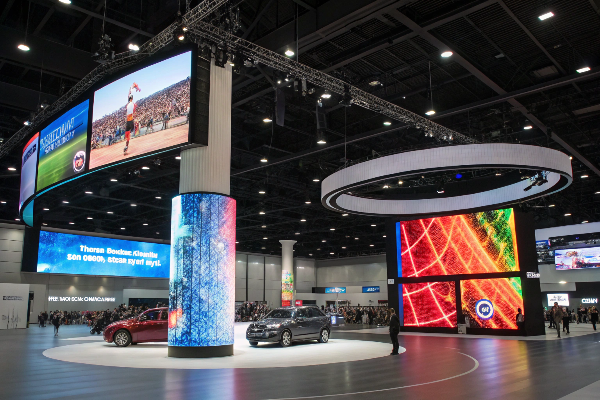
The diversity of Jumbotron screen types has expanded dramatically in recent years, moving far beyond the traditional rectangular displays that once dominated the market. Standard rectangular LED displays remain the most common configuration, featuring flat panels arranged in a 16:9 or 4:3 aspect ratio. These displays excel in traditional sports venues and convention centers where viewing angles are predictable and installation simplicity is valued.
Curved LED displays represent an evolution in Jumbotron technology, wrapping content around architectural features or creating a more immersive viewing experience. The curvature helps maintain consistent viewing angles throughout larger venues and can be particularly effective in arenas with 360-degree seating configurations. At SuperVisual, we recently completed a curved installation that follows the natural contour of a stadium's upper deck, ensuring optimal visibility for all spectators.
Spherical LED displays push the boundaries of traditional screen design, creating striking visual landmarks while delivering content viewable from multiple angles. These installations often serve as architectural centerpieces in addition to their functional role. I worked with a client in the entertainment sector who incorporated a 6-meter diameter spherical display in their venue entrance, creating an unforgettable first impression for visitors while displaying event information and promotional content.
For venues with unique architectural considerations, modular custom-shaped displays offer unprecedented flexibility. These systems utilize standardized LED cabinet designs that can be arranged in virtually any configuration - from undulating waves to corporate logos or abstract artistic forms. The modular approach allows for future expansion or reconfiguration as needs change. A particularly innovative project we completed involved creating an installation that transitioned from a standard rectangular screen to a scattered pixel pattern that integrated with the venue's distinctive ceiling design.
Transparent LED screens represent one of the most recent innovations, allowing light to pass through the display while still showing content. These systems are particularly valuable in settings where maintaining natural light or preserving views is important. Retail environments and modern architectural installations have embraced this technology for its ability to overlay digital content onto physical spaces without blocking sightlines or creating visual barriers.
| Display Type | Best For | Key Advantages | Considerations |
|---|---|---|---|
| Rectangular | Traditional venues, stadiums | Cost-effective, familiar format | Limited architectural integration |
| Curved | Arenas, venues with 360° seating | Improved viewing angles, immersive | More complex installation |
| Spherical | Landmark installations, atriums | Visual impact, multi-angle viewing | Higher cost, specialized content creation |
| Custom/Modular | Unique venues, artistic installations | Architectural integration, distinctiveness | Custom content requirements |
| Transparent | Retail, modern architecture | Preserves light/views, overlay capability | Lower pixel density, specific lighting needs |
How to Choose the Right Jumbotron Screen?
Selecting the appropriate Jumbotron for your venue presents significant challenges. With rapidly evolving technology and numerous suppliers making competing claims, the decision-making process can be overwhelming. Making the wrong choice could result in a costly system that fails to meet your specific requirements.
To choose the right Jumbotron screen, assess your venue size and viewing distances, determine indoor/outdoor requirements, establish budget constraints, consider content types, evaluate maintenance needs, and consult with experienced professionals. Select a reputable manufacturer with proven installation experience and comprehensive after-sales support.
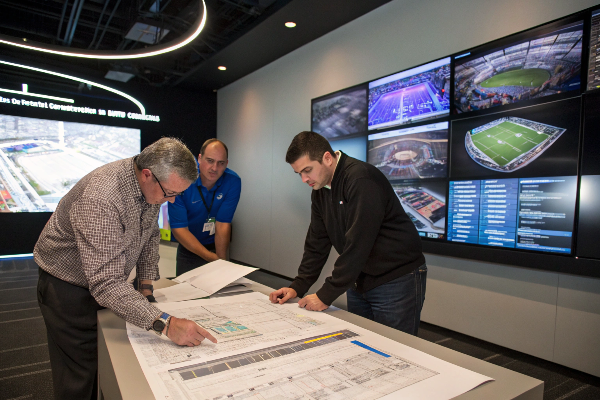
The process of selecting the ideal Jumbotron screen requires careful consideration of multiple factors to ensure the investment delivers maximum value. The first step involves a thorough assessment of your venue's physical characteristics and audience positioning. Measure the primary viewing distances carefully, as this directly determines the appropriate pixel pitch. For example, if most viewers will be at least 50 feet away, a 10-12mm pixel pitch might be perfectly adequate, potentially saving hundreds of thousands of dollars compared to a 6mm option.
Environmental conditions play a crucial role in Jumbotron selection, particularly for outdoor installations. Beyond basic weather resistance, consider factors like direct sunlight exposure (affecting brightness requirements), temperature extremes (impacting cooling systems), and local regulations regarding brightness and light pollution. In coastal locations, salt air corrosion resistance becomes critically important. I've seen installations deteriorate rapidly in seaside venues where this factor wasn't properly addressed during selection.
Content requirements significantly influence technology choices. Sports venues primarily showing live action and replays have different needs than performing arts centers displaying subtle visual elements. Analyze the specific content you'll display most frequently, considering factors like typical motion speeds, color requirements, and the importance of fine detail. For racing venues where fast motion tracking is essential, we typically recommend higher refresh rates and advanced motion compensation technology.
Installation logistics and structural considerations should be evaluated early in the selection process. The weight of LED displays varies significantly between manufacturers and technologies. Your venue's supporting structure must be capable of safely handling the display weight plus mounting hardware. Additionally, access for installation and maintenance must be carefully planned. I recall one project where we had to custom design a modular system that could be brought in through standard doorways because the venue lacked large access points.
Long-term operational considerations often get overlooked during the selection process but significantly impact total ownership costs. Energy efficiency varies widely between systems, as do maintenance requirements and component lifespan. Premium systems may incorporate features like individual module calibration, redundant power supplies, and hot-swappable components that minimize downtime during inevitable maintenance situations.
When evaluating potential suppliers, look beyond the initial purchase price. Examine warranty terms carefully, confirm spare parts availability, and investigate the manufacturer's history of supporting older installations. Local service capability is particularly valuable for minimizing response time when issues arise. At SuperVisual, we maintain regional support teams and parts inventories to ensure our clients receive prompt assistance regardless of location.
The control system selection is equally important as the display hardware itself. Modern Jumbotron operations require intuitive software interfaces that allow staff to manage content effectively. Consider who will operate the system day-to-day and ensure the interface matches their technical capabilities. Some venues benefit from simplified preset-based systems, while others require advanced features for dynamic content management. We often conduct operator training sessions that simulate actual event scenarios to ensure staff confidence before going live.
I strongly recommend requesting detailed demonstrations and reference site visits before making final decisions. Experiencing similar installations firsthand provides insights that specifications alone cannot convey. During these visits, speak with the venue's technical staff about their real-world experience with both the equipment and the supplier's support services. Their candid feedback often reveals strengths and weaknesses not apparent in marketing materials.
| Selection Factor | Questions to Ask | Why It Matters |
|---|---|---|
| Viewing Distance | What is the minimum/average viewing distance? | Determines appropriate pixel pitch |
| Environmental Conditions | Indoor or outdoor? Exposure to elements? | Affects IP rating, brightness requirements |
| Content Type | Sports, concerts, presentations, advertising? | Influences resolution and refresh rate needs |
| Budget Reality | Initial investment vs. long-term operation costs? | Helps balance quality with financial constraints |
| Support Structure | Can existing structure support the weight? | May require additional engineering considerations |
| Maintenance Access | How will technicians reach the display? | Affects serviceability and downtime duration |
| Control System | Who will operate it? What content management needs exist? | Determines interface complexity and training requirements |
Conclusion
Jumbotron screens transform venues by providing immersive visual experiences that enhance event enjoyment. Understanding their technology, features, and selection criteria helps you choose the right display for your specific needs, ensuring maximum impact and return on investment.

